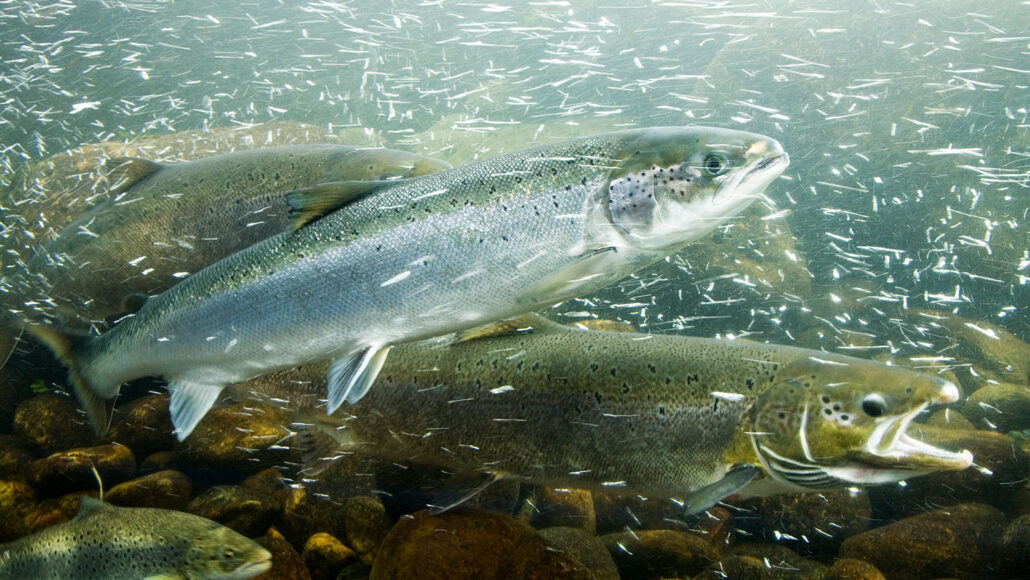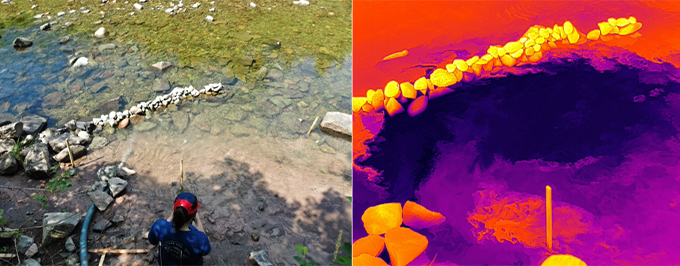Pumping cold water into rivers could help fish chill out
Hundreds of fish beat excess heat in the cool human-made plumes

Warmer rivers mean less comfortable habitats for cold-water species. Rising water temps have led to falling numbers of North American Atlantic salmon.
Westend61/gettyimages
By Nikk Ogasa
This is another in our series of stories identifying new technologies and actions that can slow climate change, reduce its impacts or help communities cope with a rapidly changing world.
PITTSBURGH — Salmon may now have their own version of air conditioning.
This past summer, hundreds of fish in Canada beat the heat in human-made plumes of cold water. The approach could help protect cold-water species as climate change warms rivers.
Fish can become stressed or even die when the water gets too hot. In rivers, Atlantic salmon and other cold-water species sometimes escape the heat by flocking to cooler zones. Such chill sites may be found near groundwater springs or tributaries. These small rivers and streams flow into larger waterways.
People have done a lot to preserve and add to these natural refuges, said Kathryn Smith. She’s a civil engineer in Canada at Dalhousie University in Halifax, Nova Scotia. Her team worked on the new river-chilling project. Until now, she says, “There hasn’t really been an emphasis or focus on if we can create cold-water habitat.”

To test the idea, her team pumped groundwater from a nearby well into the Wrights River in Nova Scotia. The groundwater was a chilly 9° Celsius (about 48° Fahrenheit). This created an artificial plume of cool water. It was up to 20 degrees C (36 degrees F) cooler than the surrounding water.
This plume attracted several hundred fish of different life stages and species. These included Atlantic salmon and brown trout. Most were alevins, young still carrying their eggs’ yolk sacs. These small fry hung out in the plume throughout the test. But when a heat wave raised river temperatures to about 30° C (86° F), older fish took shelter in the plume, too.
The team also tried a second approach. They rerouted some water from the river into an underground trench. Here, the water cooled a bit before flowing back into the river. This method cooled part of the river without needing a pump. The water temperature fell by only a few degrees Celsius this way. But even so, fish were spotted in the cooled flow throughout the summer.
Smith’s team presented the findings here on Oct. 17 at the Geological Society of America meeting.
Though small, these early tests show a “proof of concept.” That means the approach shows promise but it isn’t yet ready for wide use. More work lies ahead to figure out how many cooling sites would be needed to really help fish communities, says John Ackerman. A consulting engineer in Hazleton, Pa., he was not involved in the new work. It will be important too, he said, to keep energy costs low. But the results suggest these solutions can work, he says. “The concept is solid.”







